By: Yaakov Lappin.
The period following the Hamas terror attack on October 7, 2023, and the subsequent multi-front war has led to a fundamental change in the IDF’s strategic doctrine and operational tactics. This change is reshaping the development of Israel’s military capabilities, both offensive and defensive. Simultaneously, Israel’s strategic situation improves significantly, Israel’s international standing has suffered a severe blow, and it faces an unprecedented media and diplomatic crisis.
Is this a zero-sum game, in which military achievements come at the expense of legitimacy, or are these two dimensions part of separate campaigns where significant gains can be achieved in both?
The deepest lesson from the events of October 7 is the need to re-examine Israel’s strategic doctrine. For many years, Israeli security policy relied on concepts of deterrence and containment, assuming that enemies like Hamas and Hezbollah could be managed through measured responses and cost-benefit analysis.
This perception proved to be catastrophically wrong because it failed to analyze the ideological and religious motivations of jihadist decision-makers, who are willing to bear enormous costs to achieve their ultimate goal: the destruction of Israel and the establishment of an Islamic entity in its place. This blindness also led to a lack of understanding regarding the capabilities of the Hamas and Hezbollah terror armies, which were built up on Israel’s borders, particularly their ability to carry out a mass invasion of Israeli territory.
The new doctrine, born out of October 7, calls for a shift from a reactive to a proactive strategy. Its core principle is to take the enemy’s stated intentions seriously, not as mere rhetoric, and to show zero tolerance for the buildup of enemy forces on Israel’s borders.
This approach rejects the idea of containment in favor of the continuous and systematic dismantling of enemy capabilities as they are being built, both near and far from Israel’s borders. This means that any organization of hostile forces, any attempt to produce or smuggle weapons, or any move to establish an operational front must be met with a decisive response, rather than waiting for an attack to materialize.
The implementation of this new doctrine is evident in the ongoing military campaign, where Israel has recorded significant strategic achievements on every front:
- Gaza: The military operations in Gaza have led to the dismantling of most of Hamas’s operational capabilities as an army. Hamas, which operated as a hierarchical military-terror organization, no longer functions as an army but as a collection of guerrilla cells. It still poses a significant threat to the IDF within the Gaza Strip, but the threat Hamas currently poses to southern Israel and its civilian population is minimal. This includes the neutralization of its significant projectile fire capability and the elimination of its ability to launch a massive invasion into the western Negev. The destruction of Hamas’s military force and the damage to its political rule are clear strategic achievements that remove an immediate and significant threat to the communities of southern Israel.
- Lebanon: In Lebanon, Israel continues its efforts to neutralize Hezbollah’s capabilities and disrupt its recovery. The Radwan Force, the organization’s elite unit, has been significantly weakened and is no longer capable of carrying out a large-scale attack on Israel, though it can still conduct pinpoint ground assaults. Within the framework of the November 2024 ceasefire, the IDF continues to operate to prevent Hezbollah’s operational presence south of the Litani River and to thwart its ability to produce and deploy weapons throughout Lebanon.
- Syria: The fall of the Assad regime, which served as a primary bridge for transferring weapons to Hezbollah, has disrupted Iran’s supply routes. This has benefited Israel’s security interests by weakening the Iranian-Shi’ite axis. The IDF operates in the Syrian arena, with an emphasis on the area near the border in southern Syria, to prevent the establishment of both Sunni and Shi’ite hostile elements. For example, Israel’s intervention in the As-Suwayda region of southern Syria, intended to protect the Druze community from the Islamist forces of the new Syrian regime, included strikes against Syrian military targets and demonstrated Israel’s determination to maintain a demilitarized zone in southern Syria.
- Iran: Israel’s Operation Rising Lion, a preemptive war against the Iranian nuclear program and its missile capabilities, succeeded in damaging most of Iran’s nuclear and ballistic missile capabilities. Furthermore, a massive blow to the command chain of the Revolutionary Guards and the Quds Force weakened Iran’s ability to support Hezbollah and Hamas.
●
The International and Media Arena: A Picture of Crisis
While Israel is recording significant strategic-military achievements, it is simultaneously suffering an unprecedented defeat in the cognitive and media arena. The global media is biased and presents, almost daily, a distorted narrative that does not reflect the reality on the ground, without fact-checking. For example, the BBC presented the case of a Gazan woman who died of leukemia as a “death from malnutrition,” thereby serving as a mouthpiece for Hamas propaganda and its “starvation” campaign—one of many examples of the Western international media adopting the Hamas narrative and almost completely failing to check basic facts.
Many Western media outlets ignored data on the distribution of over 100 million meals by the GHF organization, supported by the US and Israel, and barely mentioned the fact that Hamas
steals a significant portion of the aid that enters the Strip under the framework of organizations operating with the UN (in parallel to GHF’s activities).
The refusal of international organizations and the UN to collect food shipments that waited under the sun at the Gaza border crossings throughout July 2025—with suspicious timing that perfectly coincided with Hamas’s campaign to increase pressure on Israel to agree to a deal on Hamas’s terms — was lacking from the international media discourse.
Likewise, when the IDF eliminated Hamas military wing member Anas al-Sharif on August 10, who was posing as an Al Jazeera correspondent (like other Hamas operatives who masquerade as “journalists”) in Gaza City, and provided abundant proof of his military activity,
the message that emerged from the international media was that Israel had killed a Palestinian journalist to silence him.
The pro-Hamas Qatari network Al Jazeera and several Western media outlets tried to downplay the significance of the extensive evidence presented by the IDF of al-Sharif’s membership in a rocket squad of Hamas’s military wing, while echoing the claim that Israel had committed a war crime.
Meanwhile, Israel faces almost daily international condemnations from many countries due to the ongoing fighting in Gaza, including from nations still considered allies, such as Germany. The United States under the Trump administration, however, continues to be a vital strategic support for Israel, including the continued supply of weaponry and protection in the UN Security Council against attempts to isolate Israel and punish it with devastating economic sanctions.
In European capitals and certain US cities, and on university campuses, Muslim communities and left-wing activists hold large demonstrations that deny not only Israel’s right to defend itself but its very right to exist.
The role of Qatar, in encouraging anti-Israel activists and amplifying messages of incitement against Israel through media outlets like Al Jazeera, social media, and by buying influence through massive investments in the West (including at US universities)—is likely highly significant. A separate and complete study is needed to map out Qatar’s activities in this context.
Even the beeper attack against Hezbollah commanders in Lebanon in September 2024, and the Israeli Air Force strikes against Hezbollah targets were accompanied by hostile international media coverage in many cases.
The gap between the military reality and Israel’s media standing stems from several factors:
- Modus Operandi – The Enemy’s Cognitive Warfare: Hamas and Hezbollah understand well that the battle for international public opinion is a decisive arena. They rely on cognitive warfare aimed at undermining Israel’s legitimacy by spreading disinformation. Hamas, in particular, excels at cognitive warfare due to its ability to infiltrate civilian organizations such as UN aid agencies in Gaza and Al Jazeera (where Hamas terrorists have been repeatedly caught posing as correspondents for the channel), to create echo chambers for their messages and build pressure on the Israeli government, intended to make it surrender to their demands and allow Hamas to regain control of the Gaza Strip.
- Speed: In the age of social media, false and biased narratives spread like wildfire, and Israeli debunking efforts, which are typically slow and reactive rather than proactive, fail to keep pace. The burden of proof is on Israeli authorities to disseminate accurate information, and the process of verifying information will always take longer than spreading lies. This is an inherent asymmetry.
- Resources and Organization: While Hamas enjoys Qatari support and vast resources for spreading its propaganda, along with the activities of mobilized lobby groups throughout the West, Israel and its allies have invested few resources in the information war and do not work in a coordinated manner where messages are pre-formulated and disseminated in various ways by both state and non-state actors.
- The Advantage of Human Shields and the ‘Invisible Enemy’ Effect: The terror armies, Hamas and Hezbollah, are completely dependent on embedding their military capabilities in civilian areas using the tactic of human shields in Gaza and Lebanon. In the Gaza Strip, Hamas dug many hundreds of kilometers to build a terror tunnel infrastructure and used every hospital, school, and clinic as a base for terror activity; entire neighborhoods were also used for this purpose. In Gaza, Hamas built the most challenging asymmetric warfare environment in the world, and many of these
operational patterns were learned (and even upgraded) from Hezbollah, the ‘big brother’ in the Shi’ite axis. This pattern of action not only provides an operational advantage to terror armies, which rely on the IDF’s adherence to international laws of war and therefore resort to using civilian shields, but it also gives them an advantage on the media battlefield. These operational patterns create an ‘invisible enemy’ effect, allowing the enemies to present a false picture of Israel attacking civilian targets in Lebanon and Gaza.
- Biased Narrative: Major media organizations tend to systematically adopt the narratives of Hamas and other anti-Israel actors, such as UN committees and Palestinian and international organizations that condemn Israel and call for a unilateral ceasefire.
The question of whether this is a zero-sum game—that is, whether Israeli achievements on the battlefield will necessarily be accompanied by losses in the international and media arenas —is a fundamental one. The military campaign and the cognitive campaign are two separate fronts, and success in one does not guarantee success in the other. Military success, such as destroying terror infrastructure and eliminating commanders, can be considered a cognitive failure if it presents a media image of uncontrolled destruction and suffering. The military achievements in conducting ground warfare in Gaza and thwarting threats have not been translated into public diplomacy successes.
On the other hand, failure in the international arena, such as diplomatic pressure, the mobilization of international courts in the anti-Israel cognitive war, the UN, boycotts, and sanctions, could directly limit Israel’s military freedom of action, especially if they influence Washington (which is not happening with the Trump administration, but another administration might have behaved differently, as the Biden administration demonstrated well).
Military success alongside a loss in the cognitive war constitutes a problematic reality for Israeli interests. It may also harm attempts to openly recruit regional allies like Saudi Arabia and keep such collaborations ‘under the table.’
To expand the margins of Israel’s legitimacy, Israel must present its own narrative in a comprehensive, consistent, and proactive manner that takes social media into account and offers a real alternative.
The Alma Center serves as a crucial example in this effort on the northern front, as its activities help to ‘turn on the light’ regarding the hidden enemy that prefers to remain out of the media spotlight to defame Israel and portray it as an attacker of civilians.
The gap between the dimensions is also evident in the management of information systems: the IDF’s military efficiency sometimes requires operational secrecy, but the need for fast and open communication with the public can conflict with this secrecy. This creates a vacuum that allows the enemy to fill the information space with its narrative. The enemy exploits its social media capabilities to wage an “information war,” using narratives focused on portraying Israel as a brutal aggressor.
To bridge the gap between strategic military achievements and cognitive failure, Israel must adopt a new approach that treats the media dimension as a central front of combat.
● Establishing a ‘Cognitive Army:’ Similar to existing armies, Israel must build a multidisciplinary force, similar to the proposal by Prof. Kobi Michael, that will be trained to fight in the cognitive arena. This force would centralize the multi-domain effort, coordinate the dissemination of facts, act proactively and quickly, distribute information, and debunk disinformation immediately in all languages. It would also launch offensive campaigns against hostile institutions (international, state, media, etc.) to expose their willingness to abandon professional norms to spread hostile messages. The ‘cognitive army’ must have significant resources and be manned 24/7 to deal with the enormous amount of false information being spread against Israel at any given moment.
Summary
The current conflict, which began on October 7, 2023, reveals a deep and fundamental gap between Israel’s military success and its failure in the cognitive arena (it should be noted that this gap was also evident before October 7 but was greatly intensified afterward). The two dimensions are not disconnected from each other; one influences the other. Military achievements alongside diplomatic-political isolation and damage to Israel’s standing are a partial outcome. Israel must act vigorously to ensure achievements on both fronts, the military and the cognitive, simultaneously.
Israel must adopt a new strategic doctrine that treats the war for public opinion as a central combat front, no less than the military battlefield, and act proactively to shape the global narrative.

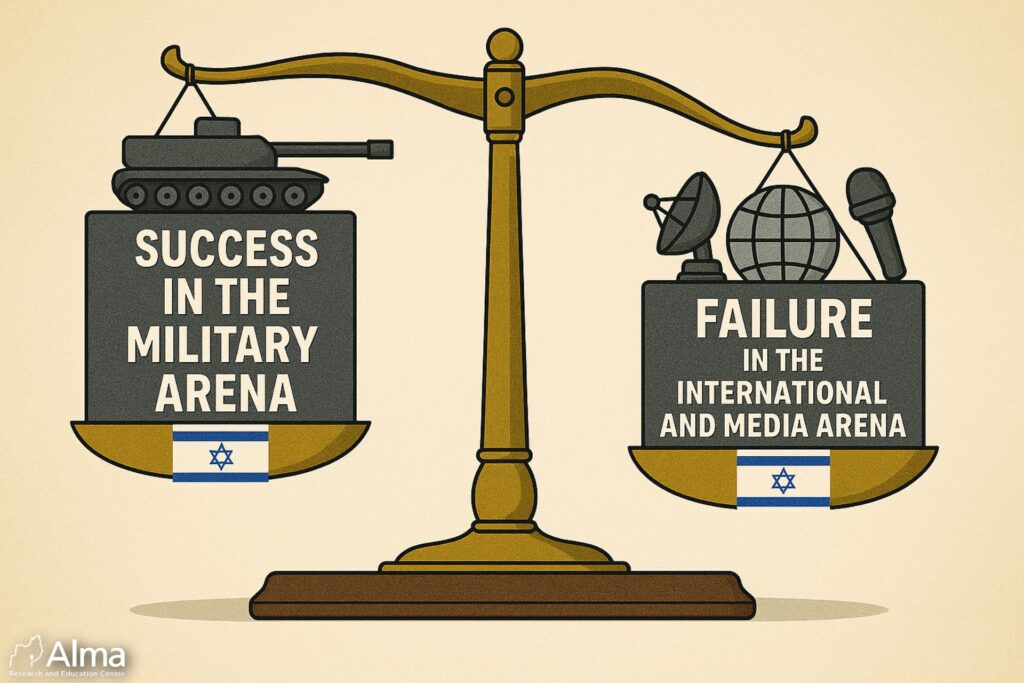

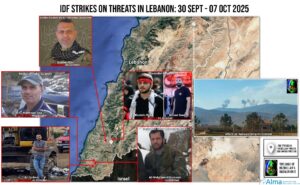
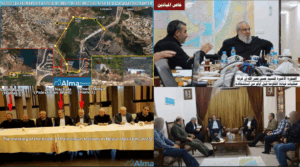
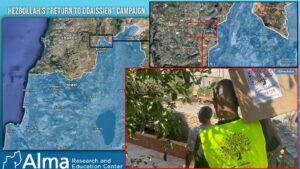
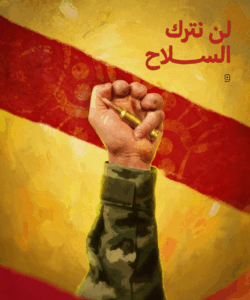
One Response
Dear Yaakov,
The cognitive dissonance of the world’s reactive behavior responses is the result of the degradation of respect for God and Truth. “Why do the nations so furiously rage together, and why do the people imagine a vain thing?” They have believed the lie told to Eve. “Hath God said…?” Let us not be deterred by the frantic shrieks of those collapsing into the black hole of the empires of lies. “Hear oh Israel, the LORD our God is ONE.”